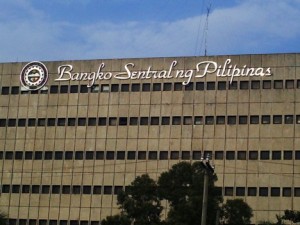BSP hikes banks’ reserve requirement
Monetary authorities on Thursday moved to mop up more cash from the economy as elevated growth rates in lending and liquidity threatened price stability.
The Bangko Sentral ng Pilipinas’ (BSP) move was in line with the expectations of analysts polled by the Inquirer earlier this week.
The hike in reserve requirements for local banks will take effect on May 30.
“The Monetary Board noted that the balance of risks to the inflation outlook continues to lean toward the upside, with potential price pressures emanating from the possible uptick in food prices as a result of expected drier weather conditions,” BSP Governor Amando M. Tetangco Jr. said in a statement shortly after the Monetary Board’s rate-setting meeting.
Benchmark overnight borrowing and lending rates were kept at their record lows of 3.5 and 5.5 percent.
An additional P60 billion in cash will sit idle in banks’ vaults as a result of the regulator’s decision to hike the reserve requirement ratio (RRR) by one percentage point.
This means that the amount will no longer be available for lending to businesses and consumers, tempering domestic demand and easing price pressures.
For major universal and commercial lenders, which corner about 90 percent of the banking industry’s resources, the RRR was raised to 20 percent.
By forcing banks to restrict lending activities, the BSP hopes to tame price pressures to protect consumers’ purchasing power.
Earlier this week, the central bank said lending growth rose by 20 percent in March—higher than the 19 percent registered the month before.
The amount of money circulating in the economy, also called M3, rose by 34 percent—way above the 20 percent the BSP considered normal.

